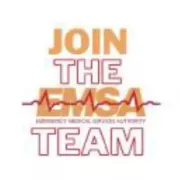Essential Functions of the Position
- Meet all organizational requirements and responsibilities of a NREMT-P provider, as defined by the Medical Control Board.
- Conduct self in an ethical, professional manner; project a positive self/company/system image.
- Establish a learning-centered environment focused on skills competency and learning outcomes, which promote the organizations mission, vision, and values. Maintain strong rapport with team members.
- Develop, coordinate, and instruct Paramedic level course curriculum that meets established national curriculum standards.
- Develop and maintain annual course schedules, and classroom, materials, and equipment consistent with the policies of any affiliate institution and the organization.
- Coordinate all aspects of paramedic school laboratory and clinical site activities.
- Supervise all team members enrolled and attending paramedic school, excluding regular field operation/communication shifts.
- Ensure all associated documentation is accurate, complete, and appropriately maintained.
- Report all required program KPI’s, develop and implement individual student performance improvement plans when necessary.
- Participate in other projects and/or research initiatives that enhance and support EMS education.
- Maintain in depth knowledge of current clinical protocols and standards established by the Office of the Medical Director/Medical Control Board.
- Always be prepared to perform in the capacity of a field Paramedic.
- Adhere to and enforce all organizational policies and safety standards.
- Perform other duties as determined by the Clinical Services Manager and senior leadership.
Job Knowledge, Skills and Abilities
- Must be in good standing as a current field Paramedic; cannot be under clinical care review for any clinical errors deemed serious by the Office of the Medical Director.
- Must be able to meet all credentialing requirements established by the Office of the Medical Director for the Clinical Educator/Quality Improvement Officer (CE/QI) Credential if working in the capacity of an EMSA credentialed paramedic.
- A good understanding of diverse learning styles, and the ability to deliver educational material in an effective manner.
- Strong communication skills: both written and verbal and the ability to speak effectively and engage larger groups.
- Ability to maintain confidential patient and personnel information.
- Establish and maintain close working relationships with team members while demonstrating compassion and a sincere dedication to their needs and concerns.
- Strong attention to detail.
- Work independently with little supervision to meet goals of the department.
Supervisory Responsibilities
No direct supervisory responsibilities but will manage projects and activities as directed.
Physical Demands
- Required to walk, sit, stand and move about the property for periods of time.
- Prolonged periods sitting at a desk and working on a computer.
- Must be able to lift, carry, push or pull up to 25 lbs.
- Occasionally may need to lift pull or pull objects up to 250 lbs. in all directions with a maximum lifting of 350 lbs. there is occasional walking and standing but minimal kneeling, crouching, bending, twisting.
Work Environment
- Work performed in an office setting, off-site and in the field.
- Work has a high-stress environment.
- Some exposure to external environmental conditions, such as heat, cold, rain, snow and ice.
- Noise level can range from minimal to intense.
Minimum Qualifications
- Associate’s degree preferred for the secondary instructor.
- Associate’s degree required for the primary instructor.
- One year of instructor experience preferred.
- Nationally registered Paramedic with a minimum of two years of field or supervisor experience in an EMS system at the Paramedic level.
- Annual Paramedic written protocol proficiency exam score of 85% or higher.
- Two or more of the following instructor ratings within six months of time in position: CPR, ACLS, BTLS, PHTLS, PEPPOSDH.
- State EMS Instructor License or ability to obtain.
- Must be 21 years of age or older.
- Must possess a valid Oklahoma driver’s license.
Must be able to pass a background check and drug screen.

